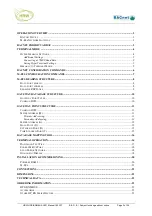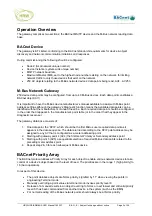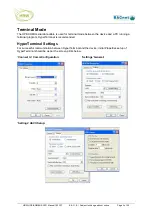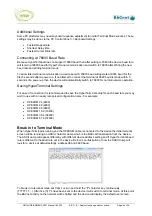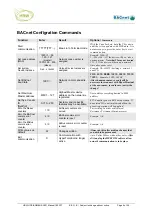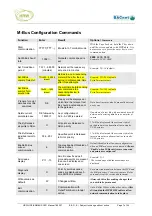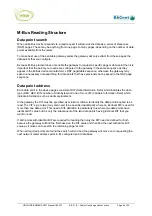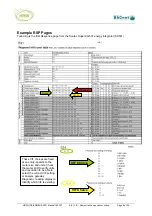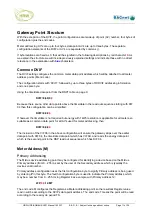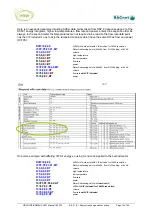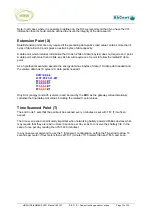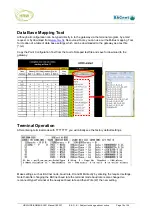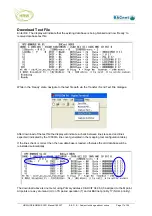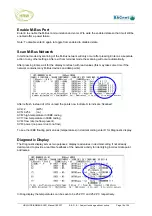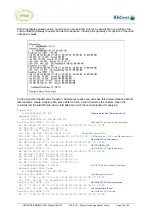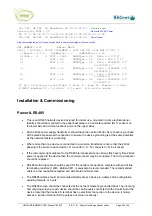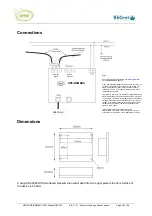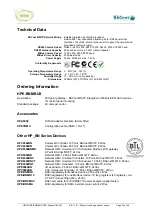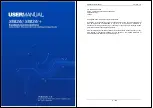
HRW HPE-BNMBUS V401 Manual 180307 E. & O. E. / Subject to change without notice
Page 12 of 24
Secondary Addressing
Secondary address configuration uses all four configuration bytes which may include wildcard F to
speed the network meter identification using only a subsegment of a meter’s serial numbers to a level of
least significant numbers that are unique for all meters on the network.
Using serial number 7654321 as an example without wildcard:
4=7,65,43,21,MT
Using serial number 7654321 as an example with least significant three digits unique on the network
wildcard F may be used:
4=FF,FF,F3,21,MT
Meter Address (A)
When the A end code is applied the primary or Secondary addressing format is the same as M end
code instructions above except the DVIF data point is not assigned to the related AV (AV result = 0 at
all times).
This A end code format is used when devices on a network are of mixed manufacture or mixed
metering size and so it is not necessarily possible to define a sequentially-first data point that is
common to all devices.
Data Point (D)
Data points required from within a meter are built up in sequence following a meter’s addressing point
when more data points are required in addition to the data point retrieved via the DVIF address which is
attached to the meter addressing AV.
These data point AV’s are constructed similar to the DVIF except they have end code D so that they are
configured such that they are read from the meter address preceding them.
If we assume that the M point is utilising the DVIF set up for time/date data point (DVIF=4,0,0,0) and we
want to read next the energy and volume from this meter:
DVIF=4,0,0,0
4=FF,FF,F3,21,MT
5=4,0,0,
0
,DT
6=4,0,0,
0
,DT
The end code D configures AV5 and AV6 as data points from within the preceding meter address.
Because all the data points so far configured have DIF 04, are entered in the same sequence as they
appear in the manufacturer’s RSP table and do not have another point above them in the RSP table
that starts with DIF 04 then only the DIF need be used because the gateway will simply read out the
first three data points that it encounters which start with DIF 04.
Referencing again the RSP table on page 9; if time/date was not needed but ‘Current Error Duration’
was used as the DVIF, and energy & volume are to be read:
DVIF=34,0,0,
0
4=FF,FF,F3,21,MT
5=4,6,0,
0
,DT
6=4,0,0,
0
,DT


